| |
|
|
| |
 |
|
| |
Beschreibung / Description
|
|
| |
Hamburg Fossilien / Hamburg fossils
|
|
| |
|
|
| |
Allgemeines / General
|
|
| |
Sie schlummern im Steinboden der Europa-Passage und kaum ein Besucher in Hamburg bemerkt sie: Überreste von Lebewesen, die vor über 140 Millionen Jahren lebten. Fossilien aus dem Jura-Marmor. Es sind Ammoniten und Belemniten. Meeresbewohner, sogenannte Marine Kopffüßer, die das große Aussterben der Arten vor 65 Millionen Jahren nicht überlebt haben. Beide Gruppen sind eng mit den Tintenfischen verwandt. Neben diesen schneckenförmigen Abdrücken liegen versteinerte Korallen, Seeigel und Schwämme. Das urzeitliche Gestein ist ein Kalkstein, der im Lauf der Zeit durch die Ablagerung von Kalkschlamm und Tonmineralen entstanden ist. Der Bodenbelag spiegelt somit ein sehr altes Stück Erdgeschichte wider, einen um etwa 150 Millionen Jahre alten Kalkstein aus der Jurazeit.
They are slumbering in the stone floor of the Europa Passage and hardly a visitor in Hamburg notices them: remains of living beings who lived more than 140 million years ago. Jura marble fossils. They are ammonites and belemnites. Sea creatures, so-called marine cephalopods, which did not survive the great extinction of the species 65 million years ago. Both groups are closely related to the squid. In addition to these snail-shaped imprints are fossilized corals, sea urchins and sponges. The primeval rock is a limestone that has been formed over time by the deposition of lime mud and clay minerals. The flooring thus reflects a very ancient piece of earth history, a Jurassic limestone approximately 150 million years old.
|
|
| |
|
|
| |
Jura-Mamor / Jura marble
|
|
| |
Jura-Marmor, auch Jura oder Jurakalk bzw. Jura-Kalkstein genannt, ist der Handelsname eines hellgelben bis blaugrauen fossilreichen Kalksteins aus dem oberen Weißjura. Der Name Jura-Marmor ist eine Handelsbezeichnung, deren Namensbestandteil Marmor aus petrographischer (gesteinskundlicher) Sicht unzutreffend ist. Gesteinskundlich handelt es sich um einen fossilreichen Kalkstein mit feinkörniger Matrix. Die bekannteste Variante des Jura-Marmors ist Jura-Gelb (auch in der Variante gebändert). Die gelbe Farbe kommt durch den Anteil an Limonit zustande. Die zweithäufigste Variante ist Jura-Grau (graublau). Jura-Bunt (graugelb gemischt) stammt aus Grenzflächen von Gesteinsbänken der grauen und gelben Varietäten. Seltenere Farben sind Rotbraun, Jura-Nussbraun, eine eher bräunliche Variante, und Jura-Rahmweiß, die aus einer hellgelben Zone gewonnen wird. Mit einem Härtegrad von 3 bis 3,5 nach der Mohs'schen Härteskala (1 – 10) gehört der Jura-Marmor zu den Weichgesteinen. Dennoch ist die Dichte hoch, woraus eine gute Polierbarkeit resultiert.
Jura marble, also called Jurassic or Jurassic limestone, is the trade name of a pale yellow to blue-gray fossil-rich limestone from the upper white Jura. The name Jura marble is a trade name whose name component marble from petrographic (rock science) point of view is inaccurate. Scientifically is rock is a fossil-rich limestone with a fine-grained matrix. The most well-known variant of the Jura marble is Jura yellow (also in the variant banded). The yellow color is due to the proportion of limonite. The second most common variant is Jura gray (gray-blue). Jura colorful (gray-yellow mixed) comes from interfaces of rock banks of the gray and yellow varieties. Rarer colors are reddish brown, Jura nut brown, a more brownish variety, and Jura cream white, which is obtained from a light yellow zone. With a hardness of 3 to 3.5 according to the Mohs hardness scale (1 - 10), the Jura marble belongs to the soft rocks. Nevertheless, the density is high, resulting in good polishability.
|
|
| |
|
|
| |
Entstehung und Verbreitung von Kalkstein / Origin and distribution of limestone
|
|
| |
Kalkstein ist ein Relikt von weit in die Erdgeschichte zurückreichende Überflutungen und der darin lebenden Organismen. Jene Organismen – Kalkalgen, Crustacea (Krebse), Mollusken, Brachiopoden, Foraminiferen und Korallen – lieferten nach deren Ableben oder durch Ausscheidungen in der Zeit vor 145,5 bis 65,5 Mio. Jahren das Ausgangsmaterial für die Bildung von Kalkstein. Heute noch sind mitunter Reste der genannten Organismen im Kalkstein als Fossilien enthalten. Unter dem Gewicht aufliegender Schichten und dem Verlanden des damaligen Kreidemeeres wurden die Kalkschichten entwässert und verdichtet. Zusätzlich enthaltene Minerale wie Calcit, Dolomit oder Gips bewirkten zudem die stabile Verkittung des einstigen Lockermaterials.
Limestone is a relic of flooding that reaches far back into the Earth's history and the organisms living in it. These organisms - calcareous algae, crustacea (crabs), molluscs, brachiopods, foraminifera and corals - provided the source material for the formation of limestone after their demise or through excretions between 145.5 and 65.5 million years ago. Remains of the organisms mentioned in the limestone are still present today as fossils. Under the weight of overlying layers and the silting of the former Chalk Sea, the limestone layers were dewatered and compacted. Additionally contained minerals such as calcite, dolomite or gypsum also caused the stable cementation of the former loose material.
|
|
| |
|
|
| |
Fossilien / Fossils
|
|
| |
Entstanden sind die Fossilien und das Gestein schließlich durch die Ausfällung von Kalkschlamm aus dem Tethyswasser. Die Sedimente wurden immer wieder von neuen Kalkschichten überlagert. Das Wasser wurde hinausgepresst, und der Schlamm verdichtete sich dadurch. Im Laufe der Zeit entstanden mehrere Lagen Gesteinsbänke mit Fossilienresten. Der gelb-braune Farbton der Bänke ist auf die Einlagerung von Eisenoxiden zurückzuführen. Es finden sich dabei verschiedenste Fossilien im Kalkstein wieder, wobei Ammoniten, Belemniten, Schwämme und Seeigel recht heufig vorzufinden sind und als Leitfossilien dienen. Leitfossilien sind Fossilien, anhand derer man die relative Altersbestimmung verschiedener Gesteinsschichten vornehmen kann. Findet man das gleiche Leitfossil in Sedimentgestein von verschiedenen Orten der Erde, so sind die Gesteine annähernd gleich alt. Diese Art der Altersbestimmung wird Biostratigraphie genannt.
Finally, the fossils and rock were created by the precipitation of lime mud from the Tethyswasser. The sediments were repeatedly overlaid by new limestone layers. The water was squeezed out and the mud thickened. Over time, several layers of rock beds with fossil remains emerged. The yellow-brown color of the benches is due to the storage of iron oxides. There are various fossils in the limestone again, with ammonites, Belemnites, sponges and sea urchins are quite common and serve as guiding fossils. Guiding fossils are fossils from which one can make the relative age determination of different rock layers. If one finds the same guiding fossil in sedimentary rock from different places of the earth, then the rocks are approximately the same age. This type of age determination is called biostratigraphy.
|
|
| |
|
|
| |
Arten von Fossilien / Types of fossils
|
|
| |
Ammoniten / Ammonites |
|
| |
Ammoniten sind trotz ihrer schneckenähnlichen Form nah mit den Tintenfischen verwandt. Ammoniten gab es seit dem Devon und starben am Ende der Kreidezeit vor 65 Millionen Jahre gleichzeitig mit den Dinosauriern aus. Die Ammoniten existierten insgesamt 350 Millionen Jahre und waren einer der arten- und formreichsten Tiergruppe der Erdgeschichte. Ammoniten haben im Inneren ein Kammersystem das durch ein Verbindungsschlauch, dem sog. Siphon, verbunden war. Durch diesen Siphon konnte der Ammonit Luft in einzelne Kammern pumpen. Nach dem Prinzip eines U-Bootes waren die Ammoniten in der Lage im Meer auf- und abzutauchen.
Ammonites are closely related to squid despite their snail-like shape. Ammonites had existed since the Devonian and died out at the same time as the dinosaurs at the end of the Cretaceous, 65 million years ago. The ammonites existed for a total of 350 million years and were one of the most species-rich and richest animal group in the history of the earth. Ammonites have inside a chamber system that was connected by a connecting tube, the so-called siphon. Through this siphon the ammonite could pump air into individual chambers. Under the principle of a submarine, the ammonites were able to ascend and descend in the sea.
|
|
| |
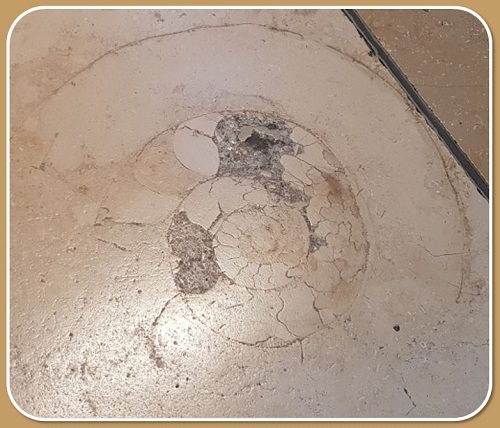 |
|
| |
|
|
| |
Belemniten / Belemnites |
|
| |
Die Belemniten, im Volksmund auch "Donnerkeile" oder "Teufelsfinger" genannt, sind die wichtigste Gruppe fossiler Kopffüßer (Cephalopoda). Sie reicht vom Unterkarbon (Mississippium) bis zum Ende der Kreidezeit also von etwa 358 bis 65 Millionen Jahren. Die Belemniten ähnelten im Aussehen den heutigen Kalmaren, hatten 10 Fangarme und einen Tintenbeutel, besaßen jedoch keine Saugnäpfe an den Fangarmen, sondern Haken. Belemniten entwickelten sich wahrscheinlich wie die Ammoniten aus den Bactriten. Sie waren im Erdmittelalter so weit verbreitet, dass sie heute zum Teil als Leitfossilien verwendet werden können. Die verschiedenen "Belemnitentiere" glichen sich in Ihrem Körperaufbau vermutlich einander weitgehend. Belemniten lebten wahrscheinlich in Schwärmen im Küstenbereich der Meere nahe unter der Wasseroberfläche.
The belemnites, also popularly known as "thunderbolts" or "devil's fingers", are the most important group of fossil cephalopods (Cephalopoda). It ranges from the Lower Carboniferous (Mississippian) to the end of the Cretaceous so from about 358 to 65 million years. The belemnites resembled today's squid in appearance, had 10 tentacles and an ink bag, but had no suction cups on the tentacles, but hooks. Belemnites probably evolved like the ammonites from the bactrite. They were so widespread in the Mesozoic that today they can be used partly as guiding fossils. The various "Belemnite animals" probably resembled each other in their body structure. Belemnites probably lived in swarms in the coastal area of the seas near the water surface.
|
|
| |
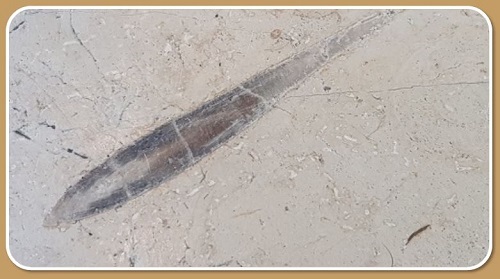 |
|
| |
|
|
| |
Seeigel / Sea urchin |
|
| |
Die regelmäßigen Seeigel (Regularia) zeichnen sich durch ein radialsymmetrisches Kalkskelett aus, welches je nach Art fast kugelförmig oder auch mehr oder weniger abgeplattet sein kann. Die Außenseite dieses Skelettes ist mit einer Epidermis bedeckt und weist Stacheln auf, die durch Muskeln teilweise bewegbar sind. Die Ausbildung der Stacheln, deren Größe, Funktion usw. können je nach Art sehr unterschiedlich sein. Sie dienen einerseits zum Schutz der Tiere und können bei einigen Arten beim Stechen sogar Gift abgeben, anderseits gibt es Seeigel, welche sich mit ihren Stacheln z.B. in Felsen einbohren können. Außerdem dienen die Stacheln der Fortbewegung, welche in alle Richtungen stattfinden kann.
The regular sea urchins (Regularia) are characterized by a radially symmetric limestone skeleton, which can be almost spherical or more or less flattened depending on the species. The outside of this skeleton is covered with an epidermis and has spines that are partially movable by muscles. The formation of the spines, their size, function, etc. can be very different depending on the type. On the one hand, they serve to protect the animals and can even give off poison in some species when stinging, on the other hand, there are sea urchins, which with their spines, for example can drill into rocks. In addition, the spines serve the locomotion, which can take place in all directions.
|
|
| |
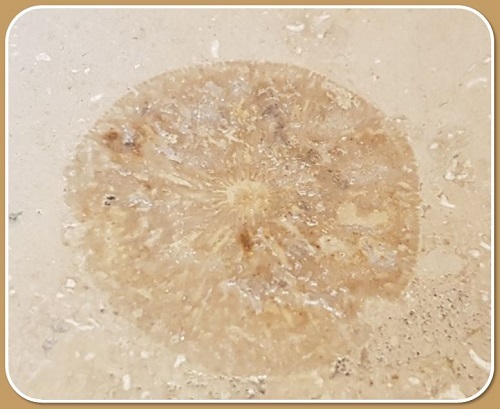 |
|
| |
|
|
| |
Korallen / Coral |
|
| |
Bei den Korallen unterscheidet man zwischen Weichkorallen und Steinkorallen (Hartkorallen), wobei letztere durch Einlagerungen von Kalk harte Skelette bilden. Durch die fortwährende Überwucherung von totem Skelettmaterial durch neue Korallenkolonien entstehen große Riffkomplexe. Das größte zusammenhängende Korallenriff ist das Great-Berrier-Riff an der australischen Ostküste.
In the case of corals, a distinction is made between soft corals and hard corals, the latter forming hard skeletons due to lime deposits. The constant overgrowth of dead skeletal material by new coral colonies creates large reef complexes. The largest contiguous coral reef is the Great Berrier Reef on the Australian East Coast.
|
|
| |
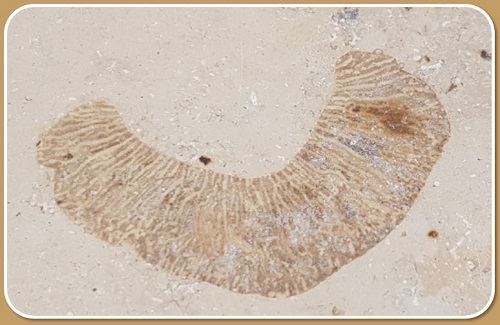 |
|
| |
|
|
| |
Schwämme / Sponges |
|
| |
Die Schwämme bilden einen Tierstamm innerhalb der vielzelligen Tiere (Metazoa). Sie leben allesamt im Wasser und kommen in allen Meeresgewässern der Erde vor. Nur wenige Arten leben im Süßwasser. Es gibt über 7500 Arten von wenigen Millimetern bis über drei Meter Höhe. Die Gestalt der meisten Arten ist abhängig von Ernährung und Milieu. Im Unterschied zu den Gewebetieren (Eumetazoa) haben Schwämme keine Organe, sowie keine Neuronen zur Verarbeitung von Signalen. Sie leben sessil, bevorzugt auf Hartboden, können aber auch Überzüge auf Pflanzen oder Mollusken-Schalen bilden. Der überwiegende Teil der Schwämme ernährt sich durch Filtration.
The sponges form an animal trunk within the multicellular animals (Metazoa). They all live in the water and can be found in all marine waters of the world. Only a few species live in fresh water. There are more than 7500 species from a few millimeters to over three meters in height. The shape of most species depends on diet and environment. Unlike the tissue animals (Eumetazoa) sponges have no organs, and no neurons to process signals. They live sessile, preferably on hard soil, but can also form coatings on plants or mollusc shells. Most of the sponges feed on filtration.
|
|
| |
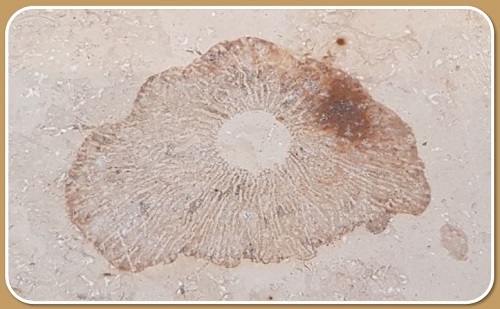 |
|
| |
|
|
| |
|
|
| |
Logbedingungen / Logging conditions
|
|
| |
Um diesen Earthcache nun loggen zu dürfen, müssen die nachfolgenden Aufgaben erfüllt werden. Beachte bitte zunächst die Öffnungszeiten, denn nur dann ist ein Zugang zu den Fossilien möglich und der Cache machbar. Die Öffnungszeiten sind Montag bis Samstag von 08:00 - 22:00 Uhr und Sonntag von 10:00 - bis 22:00 Uhr. Weitere Informationen findet ihr auch direkt auf der Homepage der Europa-Passage.
To be able to log this Earthcache, the following tasks have to be fulfilled. Please note the opening times first, because only then is access to the fossils possible and the cache feasible. The opening hours are Monday to Saturday from 08:00 to 22:00 and Sunday from 10:00 to 22:00. Further information can be found directly on the homepage of Europa-Passage.
|
|
| |
|
|
| |
Aufgabe 1 / Task 1 |
|
| |
Innerhalb der Europa-Passage findest du die Fossilien auf dem Boden. Zudem findest du Städtenamen, die in Abständen im Boden eingearbeitet sind. Finde die Städtenamen auf den folgenden Bildern und nenne mir das Fossil, welches sich unter dem Earthcache Logo befindet.
Inside the Europa Passage you will find the fossils on the ground. In addition, you will find city names, which are incorporated at intervals in the ground. Find the city names in the following pictures and give me the fossil, which is located under the Earthcache logo.
|
|
| |
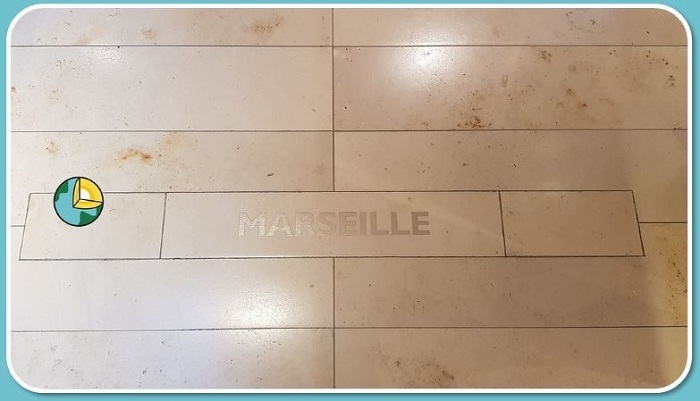 |
|
| |
Marseille - Etage (floor) E1 |
|
| |
|
|
| |
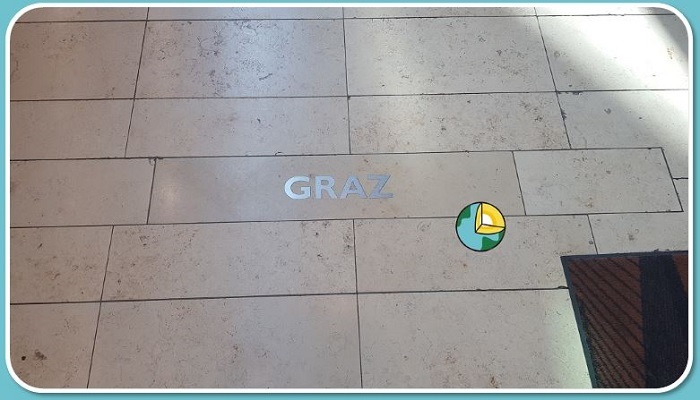 |
|
| |
Graz - Etage (floor) E2 |
|
| |
|
|
| |
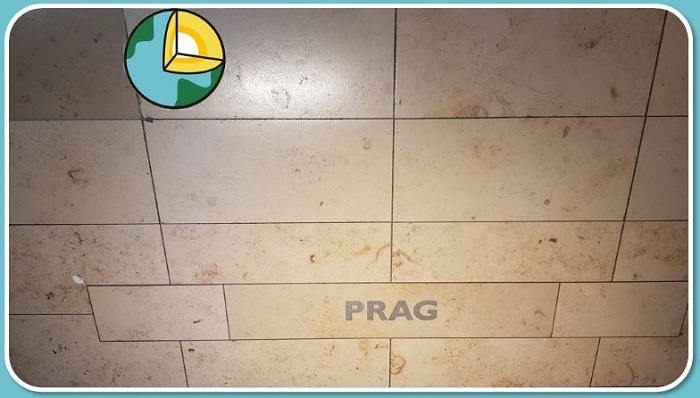 |
|
| |
Prag - Etage (floor) E2 |
|
| |
|
|
| |
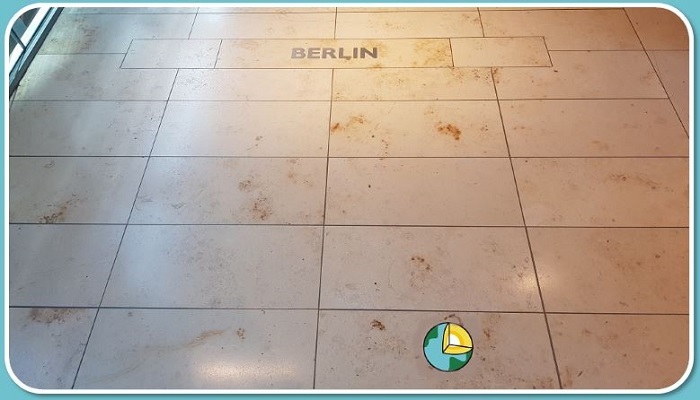 |
|
| |
Berlin - Etage (floor) O1 |
|
| |
|
|
| |
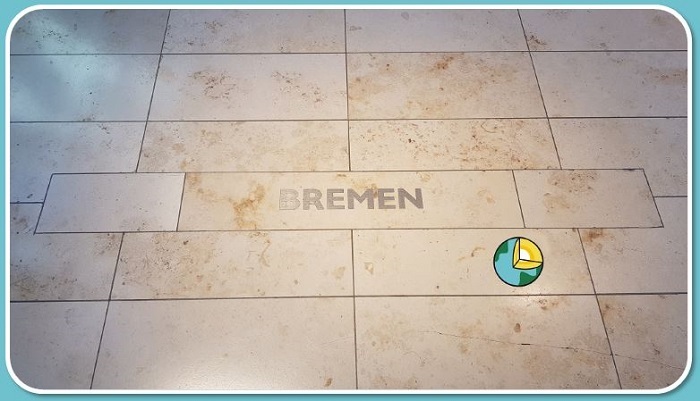 |
|
| |
Bremen - Etage (floor) O1 |
|
| |
|
|
| |
Aufgabe 2 / Task 2 |
|
| |
Suche die Städte Erfurt (Etage E2) und Hamburg (Etage O1) auf und beschreibe mir die Beschaffenheit und Farbgebungen der Kalksteinplatten. Welche Unterschiede kannst du zwischen beiden Platten ausmachen? Nimm dazu gerne Bezug auf das in Listing beschriebene Limonit.
Search the cities of Erfurt (floor E2) and Hamburg (floor O1) and describe the nature and colors of the limestone slabs. What differences can you make between the two plates? Please refer to the Limonit in Listing.
|
|
| |
|
|
| |
Aufgabe 3 / Task 3 |
|
| |
Suche dir ein Fossil deiner Wahl aus und beschreibe mir wie es aussieht (Struktur, Farbe, Form, Größe).
Choose a fossil of your choice and describe what it looks like (structure, color, shape, size).
|
|
| |
|
|
| |
Freiwillig / Optional |
|
| |
Ich würde mich natürlich sehr über ein Foto von weiteren Versteinerungen freuen, die ihr auf der Suche gefunden habt.
Of course, I would be very happy to receive a photo of further fossils found on the search.
|
|
| |
|
|
| |
Schicke mir bitte eine Mail mit deinen Antworten aus Aufgabe 1 bis 3 unter Angabe des EC's "Hamburg Fossilien" an die in meinem Profil angegebene Adresse. Das optionale Logfoto einfach an deinen Onlinelog hängen. Nach dem Absenden der Antworten darfst du auch sofort online loggen. Falls etwas nicht in Ordnung sein sollte, melde ich mich dann bei dir.
Please send me an email with your answers from task 1 to 3 stating the EC "Hamburg fossils" to the address given in my profile. Just hang the optional log photo on your online log. After submitting the answers, you may also log online immediately. If something is wrong, I will contact you.
|
|
| |
|
|